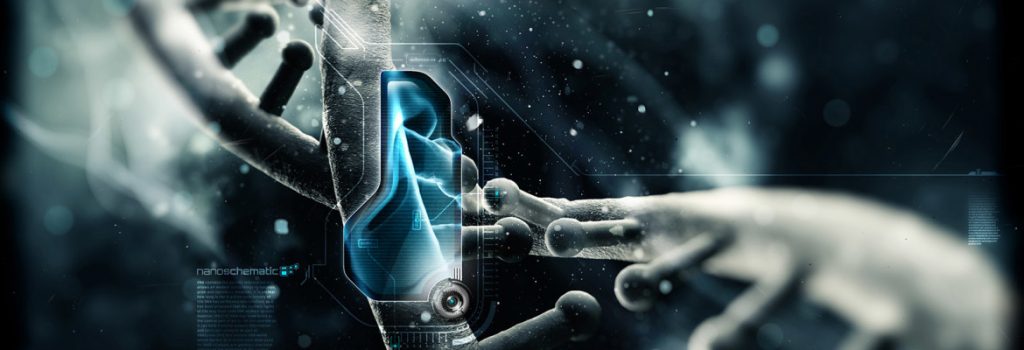Are babies born believers? Or the idea of God is only limited to adults? With the rise of developmental psychology in the last hundred years, research showed interesting and astonishing results. "Born Believers: The Science of Children's Religious Belief" written by Justin L. Barrett (PhD) describes all of this in detail with scientific evidence both…Read more Born Believers: শিশুর সহজাত আস্তিকতা
GRExit: You may not need GRE anymore to study in the 🇺🇸
When I first came to know that GRE is required to pursue higher study in the US, I completely ignored considering the US for my Ph.D. I did not want to invest my time into something that I would not need in my future research/work. instead of reading tons of vocabulary ? and practicing high-school…Read more GRExit: You may not need GRE anymore to study in the 🇺🇸
আতঙ্ক ভুলে সেবার এক মহান সুযোগ হোক করোনা
"বিপদে আমায় রক্ষা করো এনহে মোর প্রার্থনাবিপদে যেন না করি ভয়" রবীন্দ্রনাথ ঠাকুর যখনই কোনো আতঙ্ক ছড়ানোর সুযোগ সৃষ্টি হয়, কিছু শ্রেনী সেখানে নিজেদের স্বার্থ হাসিলের চেষ্টা করে এবং এখনও সেটা চলছে। নিজেদের স্বার্থে ফুলিয়ে-ফাঁপিয়ে এটাকে একটা ভয়ঙ্কর বিষয়ে পরিনত করেছে তারা। করোনা নিয়ে সচতনতার চেয়ে এখন আতঙ্কই বেশি। কিন্তু এই আতঙ্ক কতোটা যৌক্তিক -…Read more আতঙ্ক ভুলে সেবার এক মহান সুযোগ হোক করোনা
The Problem with Python Package Structure in dev Mode
If you are trying to develop a python package and facing difficulties in doing so, this article may help. The Issue Recently, I was trying to develop a python package for a data science project. I generated my project using Data Science Cookiecutter. The folders were organized in the following way - ├── LICENSE ├──…Read more The Problem with Python Package Structure in dev Mode
হাজার বছর ভবিষ্যতের মানুষের সাথে কথা বলা
রূপপূরে পারমাণবিক বিদ্যুৎকেন্দ্র হচ্ছে। এই কেন্দ্রে বিদ্যুৎ উৎপাদনের পরে পারমাণবিক জ্বালানির যে তেজস্ক্রিয় উচ্ছিষ্ট তৈরী হবে তা রাশিয়া নিয়ে যাবে। কিন্তু তারা এটা নিয়ে আসলে কি করবে? বিশেষ কিছুই করবে না... তারা অস্থায়ীভাবে এই উচ্ছিষ্ট একটি জায়গায় ডাম্প করে রাখবে। কারণ, তেজস্ক্রিয় উচ্ছিষ্ট বা নিউক্লিয়ার ওয়েস্টের ফেলে রাখার স্থায়ী কোন জায়গা/প্রক্রিয়া নেই। এর মূল কারণ…Read more হাজার বছর ভবিষ্যতের মানুষের সাথে কথা বলা
কানাডার বুকে এক টুকরো ফ্রান্স
এবারের গ্রীষ্মে বেশ কয়েক জায়গায় ভ্রমণের সুযোগ হয়েছে। মাসখানেক আগে ২ সপ্তাহের সফরে কানাডার মন্ট্রিয়াল আর আমেরিকার নিউ ইয়র্ক ঘুড়ে আসলাম। আজকে একটু সময় পেয়ে মন্ট্রিয়ালের সফর সম্পর্কে লিখছি। অনেকে জেনে থাকবেন কানাডায় ইংরেজ এবং ফরাসী দুই ঔপনিবেশিকেরই উপনিবেশ ছিল। কানাডার পূর্বাঞ্চলিও ক্যুবেক এবং মন্ট্রিয়াল এরিয়াতে ফরাসী প্রভাব বেশী ছিল। এখানের মূল ভাষাও ফ্রেঞ্চ। শহরের…Read more কানাডার বুকে এক টুকরো ফ্রান্স
Computing Machinery and Intelligence by Alan Turing
This classic paper from 1950 was written by Alan Turing. This is where he first introduced the question "Can Machine Think?" and to answer that question he proposed "The Imitation Game". The paper not only presents the computational or mathematical aspect of learning machine but also discusses theology, philosophy to telepathy and how can we…Read more Computing Machinery and Intelligence by Alan Turing
Modeling Human Disease with iPSC
Induced Pluripotent Stem Cell (iPSC) has opened up new approaches in disease modeling, personalized medicine, cell therapy, regenerative medicine and so o. Here is my presentation slide on Human Disease modeling with iPS cell. Helpful references: Ardhanareeswaran, K., Mariani, J., Coppola, G., Abyzov, A. & Vaccarino, F. M. Human induced pluripotent stem cells for modelling…Read more Modeling Human Disease with iPSC
মীনা কার্টুনের দোকানদার ও এ যুগের জুকারবার্গেরা
ছোটবেলায় দেখা মীনা কার্টুনের একটা পর্ব ছিল এরকম -- মীনা ও তার বাবা দোকানদারের কাছ থেকে ঋনস্বরূপ ৮০০ টাকা নিতে গেলে দোকানদার চুক্তিপত্রে ইচ্ছা করেই ১৮০০ টাকা লিখে অক্ষরজ্ঞানহীন মীনার বাবার কাছ থেকে টিপসই নেয়। তবে বুদ্ধিমতী এবং লেখাপড়া জানা মেয়ে মীনা লেখাটি পড়ে এবং বাবাকে দোকানদারের ইচ্ছাকৃত এই “ভুল” এর থেকে বাঁচায় (লিঙ্ক)। তথ্য-প্রযুক্তির…Read more মীনা কার্টুনের দোকানদার ও এ যুগের জুকারবার্গেরা
Does Result Really Matter?
Once a sprinter was competing with nine other sprinters in a 100-meter race. But when he entered the arena, he saw - while everyone starting from the same mark, he was marked to starting from 20 meters behind others. After asking the referee the reason, referee replied, "Because your previous race result was not as…Read more Does Result Really Matter?
How I learn new Framework/Language/Library/Tools
Frameworks come-and-go. There's nothing you can do. But one thing you can do is - adapt. And if you don't, you'll be forgotten like your framework/tools. Most of us fear new stuff. We fear change. Adaptation is very easy if you can overcome the fear of it. It is not only true for the framework…Read more How I learn new Framework/Language/Library/Tools
Can Machine Learning Really Detect Lung Cancer?
"Artificial Intelligence (AI)" - a topic that is so intriguing throughout last decade that even Elon Musk and Mark Zuckerberg debated over recently. Key integral part of an AI is Machine Learning (ML) which allows a machine to learn how we want them to think. Although it has been almost fifty years since ML and…Read more Can Machine Learning Really Detect Lung Cancer?
My First Step towards Bioinformatics
Bioinformatics is a rising area which combines multiple discipline including Biology, Computer Science, Psychology, Mathematics and Statistics, Chemistry. I have a keen interest in Biological Science. I had courses in high school in Biology and I did quite well there. But when I had to choose my undergrad major I chose Computer Science as I…Read more My First Step towards Bioinformatics
Forecasting from Times Series model using Python
Playing with large set of data is always fun if you know how to do it. You can fetch interesting information from it. As part of my Master's course I have had opportunity to work on forecasting using Times Series modeling. And yes, now I can predict future without being a clairvoyant. 😀 Considering popularity…Read more Forecasting from Times Series model using Python
Dynamic form field based on another model’s entries and save them in a m2m way in Django
It's been a while since I have done this type of brain storming stuff. Today is my country's victory day and I have got some free time. Objective: I have a inventory model named Item. An item can have many attributes such as height, width etc. Think about a system where more attributes can be…Read more Dynamic form field based on another model’s entries and save them in a m2m way in Django
image manipulation with cache facility in nginx
Manipulation like resizing to cropping, rotating an image is very easy through image_filter module of nginx. In addition we can cache this manipulated images. We will need 2 nginx server. original server [ i,e, http://mysite.local:80 ] media server. [ i,e, http://media.local:80 ] This server will be used to deliver the desired resized or cropped images.…Read more image manipulation with cache facility in nginx
IntelliJ IDEA + Phonegap + Android SDK + Genymotion + linux
It is bit tricky to do this all together. Let me give me a overview why I choose these tools . IntelliJ IDEA is an IDE I love working on. Actually for all of my developing purpose I use Jetbrain's Product. PhpStorm, PyCharm, WebStorm. Since, it is not targeted for native android development choosing Android…Read more IntelliJ IDEA + Phonegap + Android SDK + Genymotion + linux
Solution of infinite digest loop for ng-repeat with object property filter in AngularJS
Few months ago I wrote a code in AngularJS which was something like this: <ul ng-repeat="course in courses|filter:{is_taken:true }" > <li>{{ course.name }}</li> </ul> It was generating a digesting loop error. Though the data was showing correctly. Soon I realized that it was generating because for each turn in ng-repeat loop, courses are filtered…Read more Solution of infinite digest loop for ng-repeat with object property filter in AngularJS
AJAX requests in CakePHP without disabling SecurityComponent
Security is always a big deal for a software specially for web app where you don't know your users' intention. To ensure some common security measure, CakePHP provides SecurityComponent with its core. Let's come to the point. If you try to POST any request through AJAX, you will get Bad Request exception and your request…Read more AJAX requests in CakePHP without disabling SecurityComponent
PHP Image Manipulation
GD library (http://php.net/manual/en/book.image.php) is a good PHP library for manipulating images. I was familiar with it but never used in production before. I'm working on a personal project now which required some image manipulation for profile image (avatar). So, I used GD library and it's really easy to use. If you are using latest version…Read more PHP Image Manipulation
2012
This year was tremendous for me. It was a successful year for me. I have also broken down some of my barrier. I'm sharing here some of these here. But at first I want to thank God for giving me such a wonderful year. Varsity life: I started my university life on 15th January. I've…Read more 2012
Making Game using SDL: Part – 2
Welcome back guys. Let's resume my last post which was Making Game using SDL: Part - 1. We discussed the variables of Graphics class. Now let's see what functions we have used. Graphics() Constructor: Graphics::Graphics(){ SDL_Init( SDL_INIT_EVERYTHING ); //Set up the screen this->screen = SDL_SetVideoMode( SCREEN_WIDTH, SCREEN_HEIGHT, SCREEN_BPP, SDL_SWSURFACE ); //Initialize SDL_ttf TTF_Init(); //Set…Read more Making Game using SDL: Part – 2
Making Game using SDL: Part – 1
Few days ago I started to develop a cricket game for one of my university courses. I decided to use SDL Library to make the game. Since I wanted to develop a very basic 2D Game in C++, so I didn't go for OpenGL or DirectX. SDL will provide almost everything to make this game.…Read more Making Game using SDL: Part – 1








